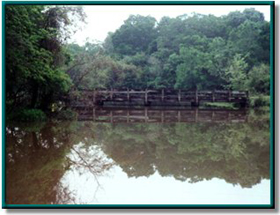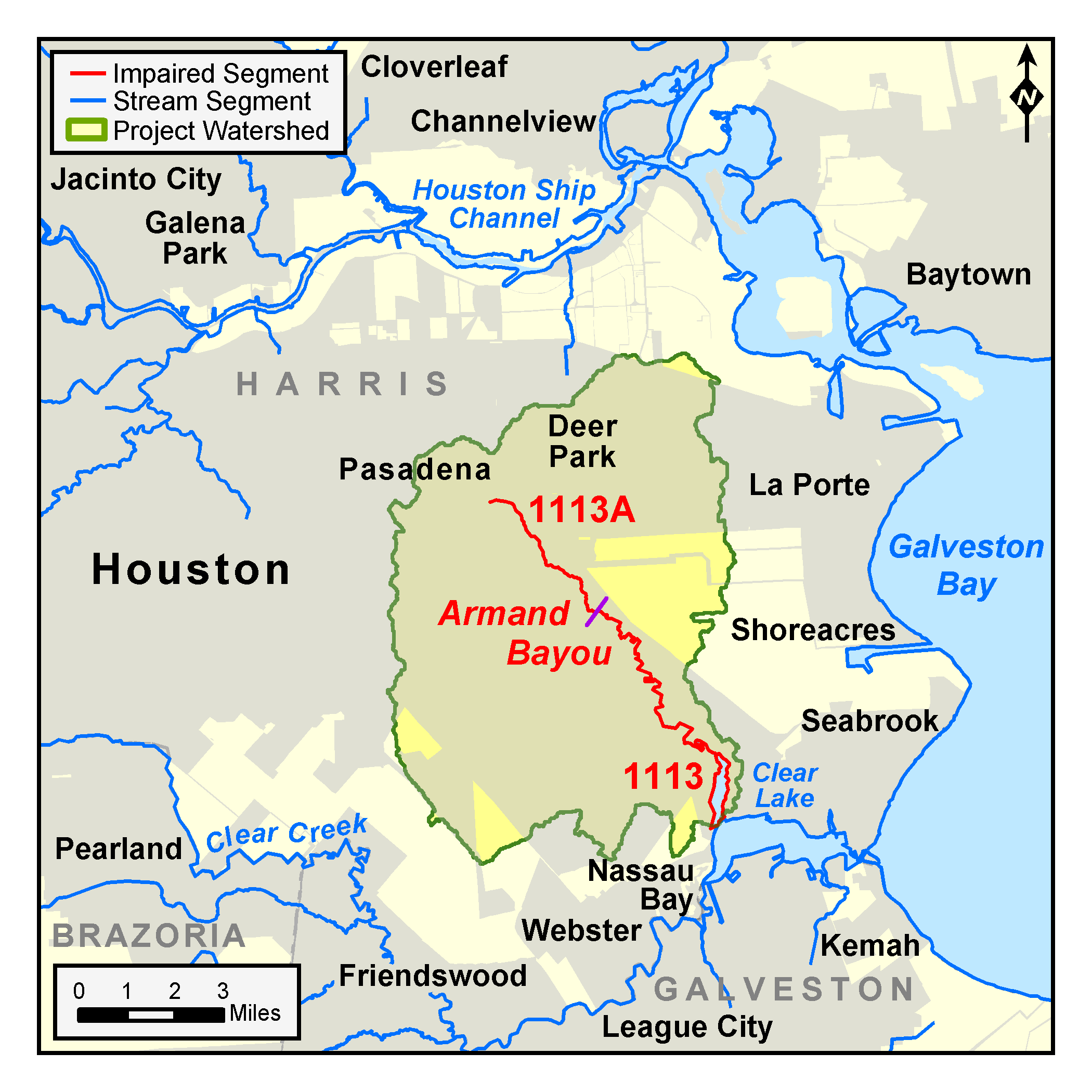Armand Bayou
County: Harris
Parameter: Dissolved oxygen
Coastal Basin: San Jacinto–Brazos Coastal
Segment: 1113 & 1113A
On this page:
- Background and Goals
- Watershed Description
- Public Participation
- Status and Implementation
- For More Information
Background and Goals
Since monitoring began during the 1970s, water quality testing has indicated that concentrations of dissolved oxygen in Armand Bayou were sometimes less than optimal for the support of fish and other aquatic life. Oxygen, which dissolves in water, is essential for the survival of aquatic life.
While the amount of dissolved oxygen in water fluctuates naturally, various human activities can cause unusually or chronically low dissolved oxygen levels, which may harm fish and other aquatic organisms. Over the past 50 years, land-surface subsidence has dramatically altered regional drainage gradients and the depth and width of Armand Bayou.
The project evaluated the effects of low dissolved oxygen on aquatic life to determine the actions necessary to improve water quality in the lake.
Watershed Description
Armand Bayou (Segments 1113 and 1113A) is located in the San Jacinto-Brazos Coastal Basin. It originates in Pasadena, a suburb of Houston, and flows southeast through Pasadena, running parallel to and south of Red Bluff Road. Armand Bayou is tidal for approximately eight miles above its confluence with Clear Lake. Horsepen Bayou, a significant tributary of Armand Bayou, flows through Clear Lake City and joins Armand Bayou in the tidal reach. The watershed lies entirely within Harris County.
Armand Bayou is rich in plant and animal life and attracts canoeists, kayakers, fishermen, and birdwatchers daily. There are several parks and other recreational areas along Armand Bayou, including Bay Area Park and Armand Bayou Nature Center.
The Armand Bayou Nature Center is a private, 2,500-acre wildlife refuge and wilderness preserve located along the lower reaches of the bayou in the center of a highly urbanized area between NASA/Johnson Space Center and the Bayport Industrial District. The Nature Center protects remnants of the region’s original wet-land, bottomland forest, and tall grass prairie ecosystems. This area has been designated as one of only four Texas State Coastal Preserves and is one of the last bayous in the Houston area that is not channelized in the tidal reaches. The Nature Center is also the recipient of the Lone Star Land Steward Award sponsored by the Texas Parks and Wildlife Department due to its excellent wildlife habitat management and private lands conservation.
Public Participation
An ad hoc stakeholder group was formed during the project under the auspices of the Texas Sea Grant of Texas A&M University.
Status and Implementation
Analyses of the data collected for the project revealed that concentrations of dissolved oxygen are often relatively low during hot weather, but also found no indication of aquatic life impairment or limitation related to the dissolved-oxygen regime.
A TMDL allocation was not developed since available data did not indicate impairment of the aquatic life community, nor did the data identify a pollutant that needs to be controlled. The TCEQ will continue working to develop protocols suitable for evaluating dissolved oxygen and aquatic life conditions in tidal streams, in conjunction with the Texas Department of Parks and Wildlife.
For More Information
Please email tmdl@tceq.texas.gov, and mention the Armand Bayou dissolved oxygen project in the subject line. Or call us at 512-239-6682.






 Back to top
Back to top